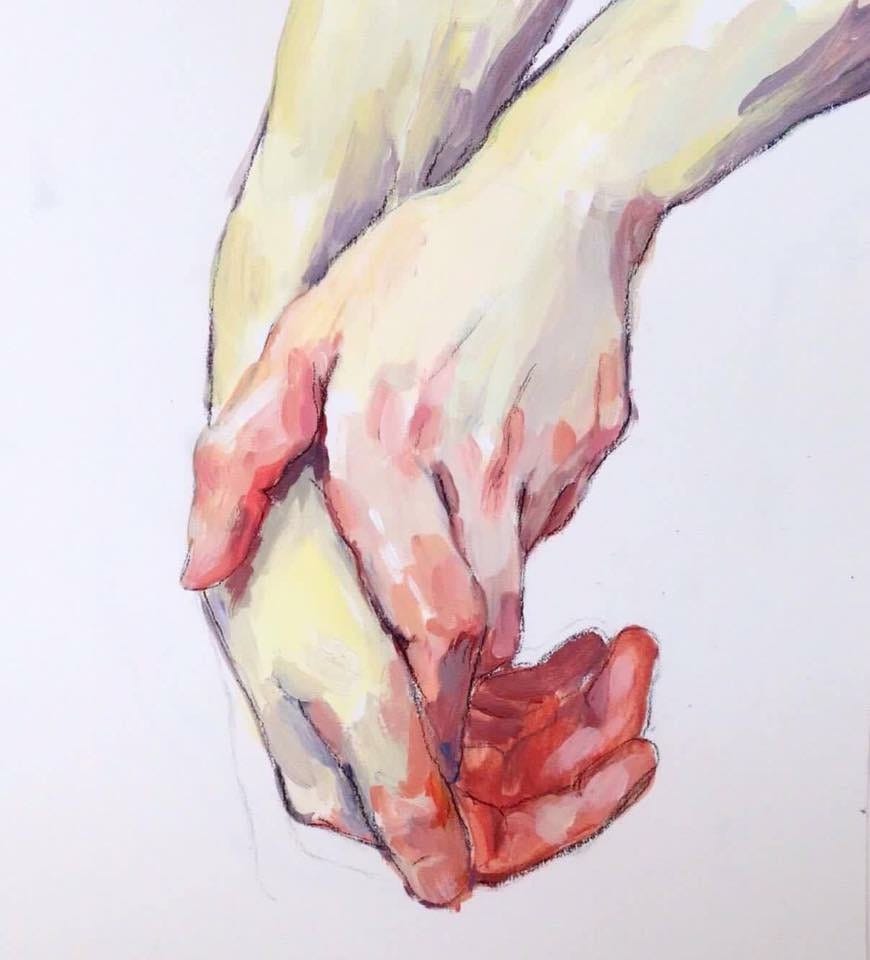Negative Solidarity: When Our Bonds Are Built on Shared Wounds, Not Shared Healing
What looks like connection may actually be control.
There’s a kind of closeness that looks like care, but isn’t.
A way of relating that wears the costume of connection, but underneath, holds us hostage to old pain.
Since making the choice to remove all paywalls and make all my content completely free, my life is now entirely supported by my readership. Switching to a pay what you can/want model has helped me stay aligned with my values of accessibility for all. It also means I rely on you all to make my work and my life possible. I’d be deeply grateful if you’d consider supporting my work directly and help keep it free for all.
Asking for support is something I’m slowly learning to do with grace. And receiving it with gratitude is something I’m practicing daily.
If you’ve ever wanted to say thank you for a piece of writing that held you — here’s a way to do that:
🌿 Venmo: @Jamila-Bradley
🌿 CashApp: $JBradley8
🌿 GoFundMe (for my sabbatical & health journey): gofundme.com/f/jamilas-writing-sabbatical-and-health-journey
That’s what I mean when I talk about negative solidarity.
It’s when people bond over shared suffering, control, or dysfunction — not in ways that move us toward healing, but in ways that keep us stuck.
It rewards endurance instead of change.
It honors silence over truth.
It feels like loyalty but acts like a trap.
Negative solidarity says: I hurt, so you should hurt too.
What Is Negative Solidarity?
Negative solidarity is a pattern of connection that thrives on limitation. People don’t just bond over what’s hard — they anchor to it. Instead of supporting each other through growth, relationships shaped by negative solidarity reinforce cycles of harm, resentment, or smallness.
It often goes unnamed because it feels like something good: solidarity, loyalty, tradition, even love. But the function is different.
Where healthy connection makes room for healing and movement, negative solidarity insists on sameness — on staying in the wound together, even when it’s time to move forward.
It’s the near-enemy of empathy:
Close enough to pass as care, but designed to keep everyone stuck.
Why It’s Harmful — Even When It Feels Like Bonding
It Builds Walls, Not Bridges
Instead of deepening connection, it creates emotional holding cells. Growth becomes threatening. Change feels like betrayal.
Common signs:
“We don’t do therapy in this family.”
“Why would you leave this job? We’re all stuck here.”
“Don’t bring that up — just keep the peace.”
It doesn’t strengthen the bond — it fortifies the cage.
It Rewards Stagnation Over Growth
Healing is framed as arrogance. Evolution becomes rejection. Instead of cheering each other on, people start policing each other’s progress.
“You’ve changed.”
“You think you’re better than us now?”
Translation: Don’t outgrow the pain we built this on.
It Weaponizes Vulnerability
In these dynamics, vulnerability isn’t sacred — it’s strategic. Softness becomes something to use, not protect.
People learn to self-censor, even inside relationships that feel “close.”
It sounds like:
“We trauma bonded — now I can’t tell them I’m doing better.”
“I shared my truth, and now it’s gossip.”
What should have been a bridge becomes a breach.
It Reproduces Scarcity Thinking
At the root of negative solidarity is often a deep fear:
If I didn’t get support, you shouldn’t either.
Help becomes suspect. Ease becomes offensive. Generosity feels like betrayal.
Rather than ending cycles of harm, it ensures they keep repeating — just with different characters.
Where It Shows Up (Common Patterns)
Parental Projection
“I struggled, so you should too.” Hardship is glorified. Rest, care, or softness is framed as weakness.Gossip-Based Friendship
Closeness is built on shared critique, not shared truth. Everyone learns that safety is conditional.Romantic Trauma-Bonding
The relationship revolves around shared wounding — and healing threatens the dynamic.Group Chat Negativity Loops
Optimism is shut down. Attempts to shift the vibe are mocked. Complaints bond the group — solutions divide it.Family Loyalty Rooted in Silence
“Don’t talk about that.” “Keep it in the family.” Discomfort is avoided at the expense of clarity and care.Peer Pressure to Stay Small
When someone sets boundaries, finds peace, or starts healing — they’re met with distance, judgment, or side-eyes.
How to Interrupt It
Ask what the relationship requires you to hide in order to belong.
Notice how people respond to your peace. Your boundaries. Your growth.
Offer new scripts:
“I love you — and I want our connection to grow with us.”
“Can our friendship hold joy, not just pain?”
“I want something more life-giving between us.”
Final Thought
Many of us were shaped by environments where pain was the primary bond. We learned that suffering equaled safety. That silence kept the peace. That help came with hidden costs.
But it doesn’t have to stay that way.
Connection built on fear can’t sustain us.
Loyalty to dysfunction isn’t healing — it’s reenactment.
And true gratitude — real, grounded gratitude — can never be coerced.
It can only be felt.
Healing asks more of us. But it offers more in return.
Not just survival — but the freedom to outgrow what hurt us.




This is awesome 😎 I’m sharing this with my YA kiddo who is learning to navigate the world out there.
The “group chat negativity loops” was something I’ve dealt with the past few months in certain leftist circles and for my own sake and growth, I had to remove myself from those spaces. While I am lonely, I’ve made more progress since leaving. I’m still dealing w/ “peer pressure to stay small” but also working towards unlearning that, but also honoring my accomplishments and moving in silence before my blessings are actualize. I know I’ll find my people who are dedicated to true shared healing (I’ve gotten close to a couple of those people!!) so it is possible 🫶🏾